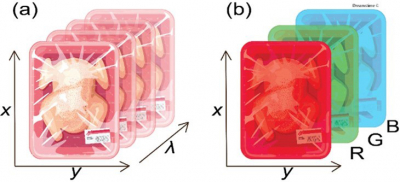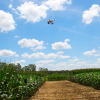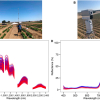
We are all careful not to eat food that is “out of date”, but we also need to avoid throwing away food that is still safe and adding to the mountain of food waste that the developed world produces. Recent work, published in JSI—Journal of Spectral Imaging (doi.org/g3qp), may point the way to a method using spectral imaging to improve the setting of use by dates.
Currently, use by dates are determined by destructive methods (e.g., bacterial plating, chemical assays or sensory panels) and take place before products reach retailers. Many extrinsic factors can affect the shelf life of poultry, including temperature, gas atmosphere, relative humidity and manufacturing hygiene practices. Although the predicted “use-by” dates attempt to take these factors into account, the actual shelf-life of products varies.
Spectral imaging can be used as a non-destructive tool to quickly identify poultry products beyond their recommended “use-by” date and predict the number of days poultry products have been stored. The researchers used a portable spectral imaging system operating in the visible region. It appears that the changes in the meat used to predict the age of the sample are likely a consequence of colour changes due to myoglobin oxidation during storage. The colour changes were too subtle to be recognised just by RGB imaging.
In future work, microbiological spoilage will be monitored using bacterial counts to serve as a more direct reference method for spoilage. These findings indicate that spectral imaging could potentially be used as non-destructive, fast alternative to conventional methods for evaluating poultry products and validating “use-by” date expectations set by predictive microbiology.













